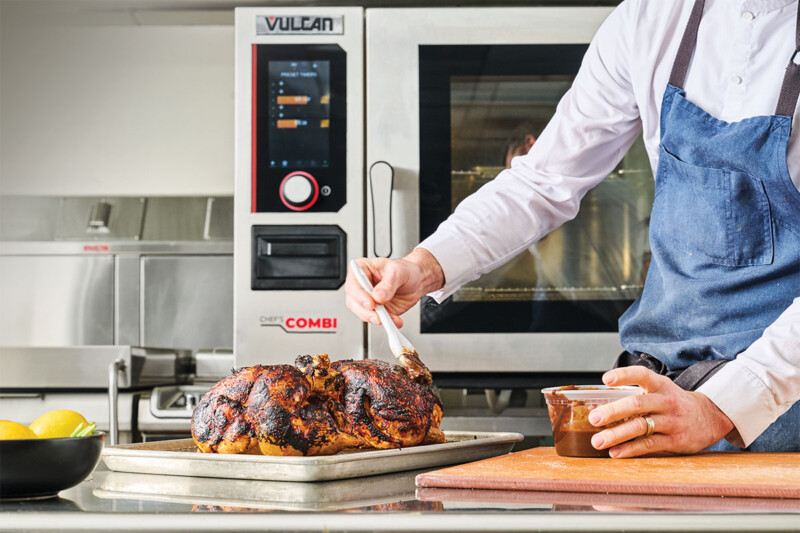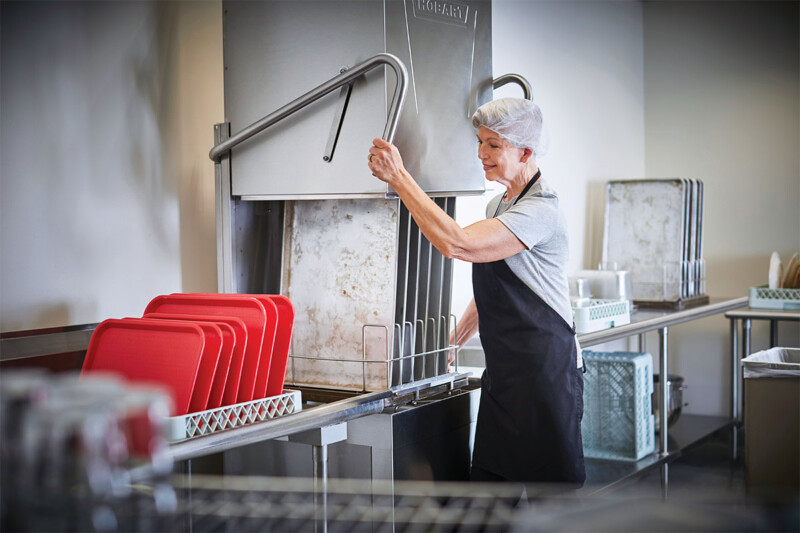Swift Sorcery: Get Up to Speed on Bean-to-Cup Coffee Brewers
With new technology and programming capabilities, high-volume bean-to-cup coffee brewers can work at a lightning pace.
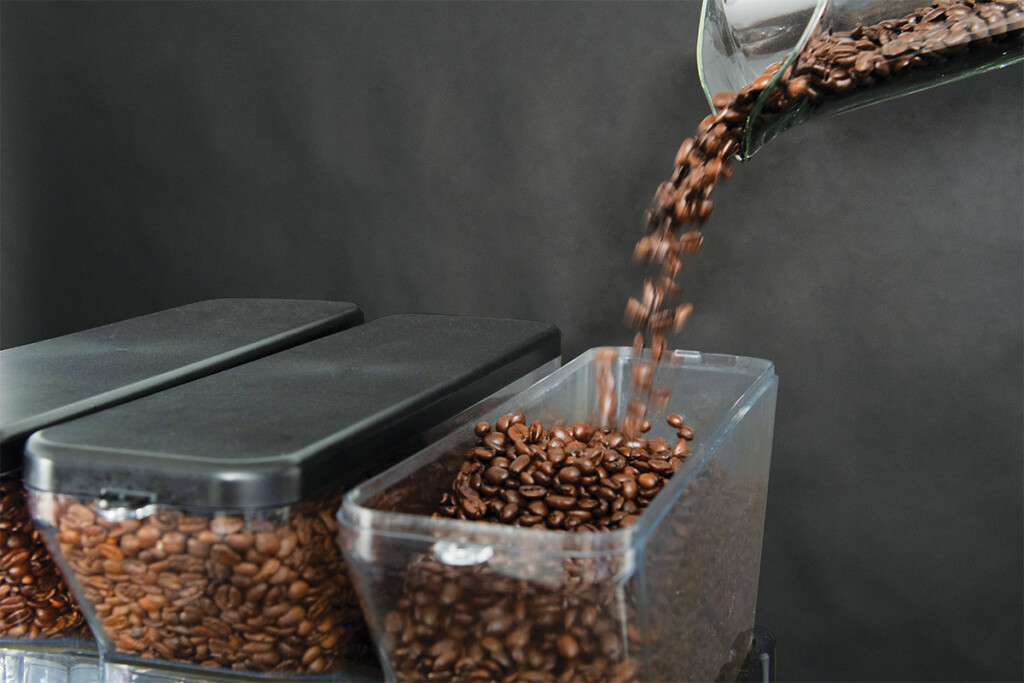
Black magic has no place in a restaurant.
However, when coffee beans are automatically ground and brewed to predictably meet peak demand, then dispensed to-order in as little as 10 seconds, witchcraft may seem likely.
Fear not, though, as the apparent magic is all in the machine: a high-volume bean-to-cup coffee brewer.
Come along as we unpack some of the newest models and spill the specification secrets you’ll need to jump-start your search.
Curtain Call
A high-volume bean-to-cup coffee brewer can deliver about 150 cups or more per day, drawing from up to four bean hoppers. The units hook up to water and drain lines, and typically require 208V or 220V, 30-amp service.
“The convenience of a bean-to-cup brewer is you’re automating the grinding, the tamping and brewing,” notes one manufacturer. “So, that does reallocate staffing a lot of times.”
Makers say the equipment also offers the advantage of sensory appeal, from visually enticing touch screens and bean hoppers to the brew quality. Several units offer iced coffee in addition to hot, but you won’t find built-in milks, flavor powders or steam wands here. Makers say the machine’s more simplistic menu has one major advantage: fewer maintenance issues than units making lattes and more.
And, compared to brewers using ground coffee and filter paper, the bean-to-cup style offers more sustainable, demand-based preparation in addition to a “richer, more flavorful cup of coffee,” makers say.
Up and At ’Em
Two bean-to-urn units, both of which launched in 2023, are bending the category. Like bean-to-cups, the units grind fresh beans, but then store a preset amount in an urn, according to operator-specific scheduling.
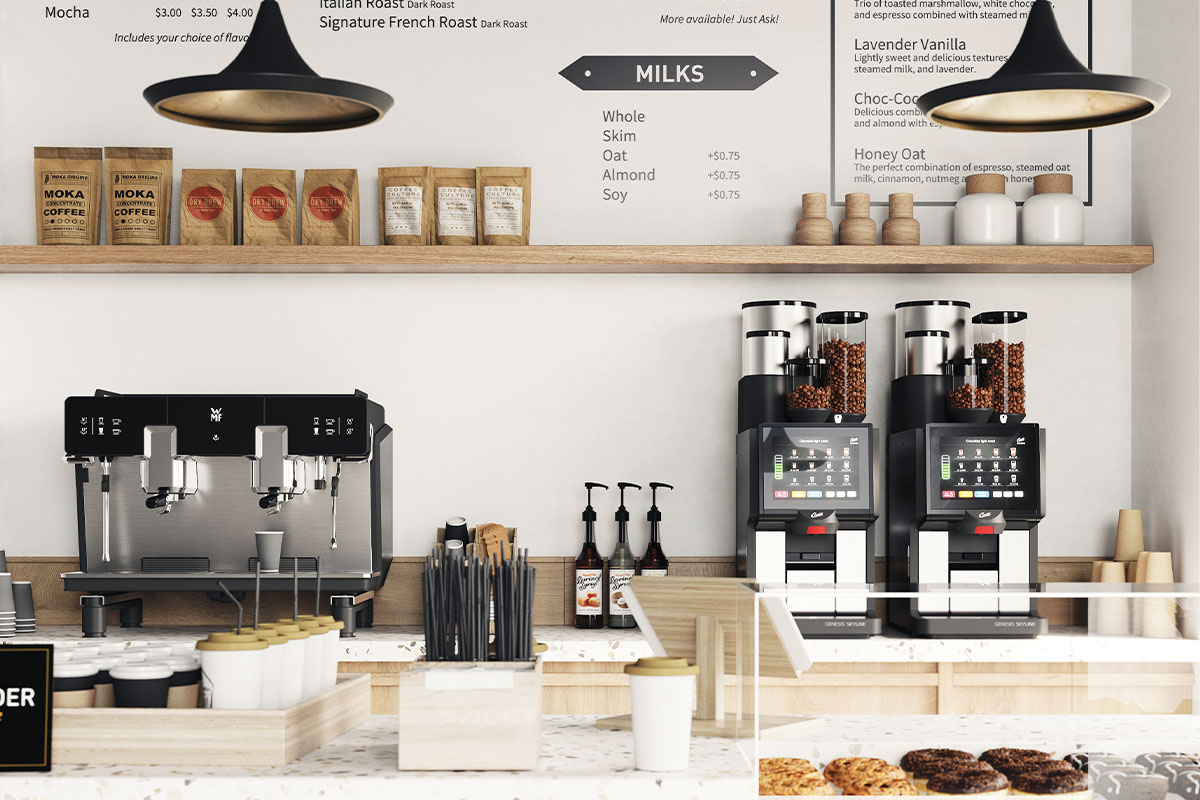
Operators may wish to have multiple types of coffee machines, with bean-to-urn units (pictured on right) being an option to fulfill demand amid peak periods. Courtesy of Curtis.
One of the models is based on demand, and can be programmed for specified times of the day and week. In peak times, the two-hopper machine brews up to 1 gallon straight from whole beans and maintains a set volume in the urn (either 25%, 50%, 75% or 100% full). Once demand lessens, the machine programming switches to bean-to-cup mode.
“There is calendar programming on the back end, so you can tell the machine, ‘At 9 a.m., I want to flip to bean-to-cup mode,’ so then it will empty out that urn, and then it will just start brewing by the cup,” the maker explains.
By day’s end, it can concoct 250-plus cups.
Another unit has three internal heated urns, each of which can store and replenish between 24 ounces and 1 gallon of a preferred blend, drawing from three bean hoppers. The urn technology “avoids any burning of the coffee,” they explain, “so it’s maintaining its profile and integrity at the temperature that the operator wants to hold.” It also can hold at an ambient temperature for over-ice dispensing. The model is rated for 110 16-ounce cups per hour.
Putting in Work
If you have a high demand for coffee, you need a machine that can reliably meet your customers’ tastes and needs. To find a bean-to-cup coffee brewer, makers suggest these considerations:
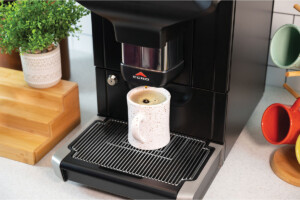
Simplistic controls enable bean-to-cup coffee brewers to work well in self-serve setups. Courtesy of Egro.
Placement. With touch-screen controls and minimal employee oversight required, bean-to-cups can certainly perform as self-serve units. Screen size and on-screen branding capabilities may be worth considering in the front-of-house, one maker suggests. One unit also has an ADA compliant option, putting a secondary touch screen at ADA height within 4 inches of the unit, to ensure accessibility. Meanwhile, one bean-to-urn maker says the unit is a great option to meet swift drive-thru demand; the model has a menu mode for either user, however. Some units also allow operators to divert used coffee grounds into a trash can rather than a built-in grounds drawer, with a chute feeding into a hole in the counter, saving the task of emptying a drawer; if that sounds appealing, be sure to allocate the added space. The units themselves range from nearly 12-inches wide to more than double that, while heights go up to 38½ inches (including hoppers), with the two bean-to-urns stretching the dimensions one way or the other. No matter the model, power, water line and drain availability need to be carefully checked against the unit’s specifications; makers say these all-important factors tend to get overlooked. Ensure proper space, whether in the front- or back-of-house, before buying, as “you do have to make a pretty permanent space for it,” one maker notes.
Volume. Your traffic patterns will help gauge if you need a high-volume unit (or two), and also if a bean-to-urn may fit. One maker of the latter units says they initially expected rather high-volume operators to specify them. “We quickly found out that operators doing as little as 25 or 30 cups a day realize the speed of service, one, but they also realize the labor and waste capabilities and savings,” they say. “So, this unit, even though it has a higher price point from an acquisition cost, it’s still less than a 12-month payback at a very low 25 cups a day.” Those wanting a by-the-cup unit, meanwhile, might choose multiple units to meet demand. “I might only serve 100 coffees a day, but they are all sold in a one- to two-hour period in the morning,” says one maker. “This may determine the need for multiple machines.” Also consider cup size. At least one unit has a recessed dispensing head to accommodate 24-ounce cups, and another has a dedicated spout for larger travel mugs and/or small airpots.
The bean-to-cup style offers more sustainable, demand-based preparation in addition to a “richer, more flavorful cup of coffee,” makers say.
Menu. Do you want hot and iced coffee? On some units, iced coffee capabilities require an add-on. Do you need more than two beans? Also consider that units with more hoppers let you double up on bestselling beans, ensuring ample inventory and fewer trips to restock the hoppers. If you’re buying more than one unit (or more than one type of coffee brewer), the equation can shift, too. “We have a lot of customers that will use [our bean-to-cup] to drive their high-volume sellers, and they’ll stay with a traditional batch brew for maybe some of their flavored coffees,” says one maker. “So, it’s not an either/or; it could be a combination.” Another maker says its two-hopper bean-to-cup is used by a large c-store, with three or four in each location. “You can offer a lot of different coffees if you have more than just one machine,” they say. While you’re considering hopper mathematics and your all-important beans, you also may wish to mull tinted hoppers, an option with at least one maker. “We’ve heard a lot of operators ask for clear hoppers just to help show fresh beans to their customer,” they say, “but we tend to lean more toward tinted hoppers, if possible, just to protect the integrity of the bean.”
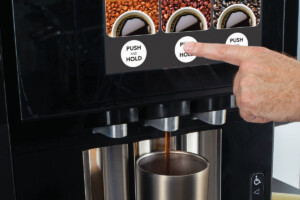
Touch-and-hold controls enable customers to mix coffee. Courtesy of Bunn.
Brewing. Some units pressure brew, similar to how espresso is prepared, producing some foam. One maker touts technology designed to precisely control parameters, including the extraction time, ensuring consistency for multiunit chains. Another maker mimics a drip-coffee style. “We use a much lower pressure to extract the coffee,” they say. “All of our competitors, they’re using a higher pressure because they’re all using espresso chambers. They make adjustments, but they can’t achieve a true drip-style profile. That’s really the single biggest difference is that quality in the cup.” This same maker offers mixed dispensing due to its push-and-hold controls, meaning a customer could mix portions of decaf and regular, for example. Other units dispense by set volumes, though mixed blends are still feasible on some such units.
Upkeep. Bean-to-cups require daily cleaning, so familiarize yourself with what the process entails. Most cycles take 3-10 minutes. One bean-to-urn machine features fully automated cleaning via calendar programming, without user intervention for 30 days, while other models need daily manual intervention. Some units guide the user with touch-screen prompts. Manufacturers also recommend planned maintenance. O-rings are one part that wears out; “it’s a little part doing a big job over and over,” one maker says. Companies compete on after-sale service, with at least two manufacturers having in-house technicians in addition to trusted third-party partners.
When You Know
Even if your choice seems obvious, makers urge in-person demos and/or in-store trials to fully grasp a unit’s capabilities. Rather than trusting industry perceptions or product descriptions, take it for a spin to bring it all full circle.
Coming in Hot
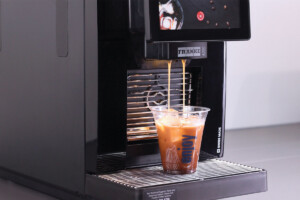
One maker of high-volume bean-to-cups is set to unveil a low-volume bean-to-cup innovation this fall. Courtesy of Franke.
Two makers’ soon-to-debut innovations will freshen portfolios.
One manufacturer that doesn’t currently offer self-cleaning expects to roll out the feature in a few months, with it being standard on its future units.
And in October, another maker is set to debut the first 110V commercial coffee brewer (a low-volume bean-to-cup with two hoppers) to grace its portfolio. The model, rated for up to 80 cups per day, also will have a water tank option for those looking to forgo plumbing hookups. “It’s able to do a lot for a small electrical requirement,” they say. It might appeal to offices, they predict.
Something’s Brewing
Hop to your search for a high-volume bean-to-cup coffee brewer with this overview, including details on two bean-to-urn units.
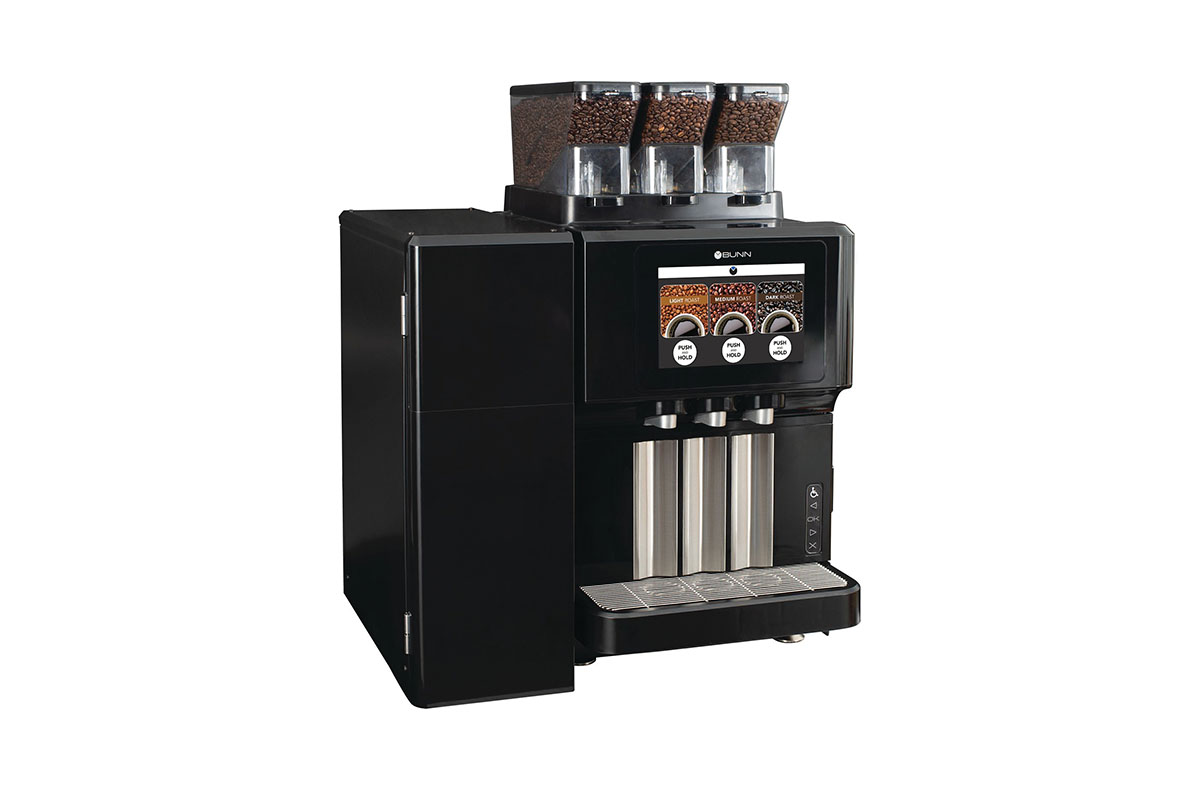
Bunn
Model: Premia, with three 1 gal. urns
Dimensions: 263/5-in.W x 242/5-in.D x 331/2-in.H*
Capacity: 110 cups per hour**
Bean hoppers: Three
Website: bunn.com
*All dimensions include hoppers and, where applicable, urns.
**All capacities are based on 16-oz. cups.
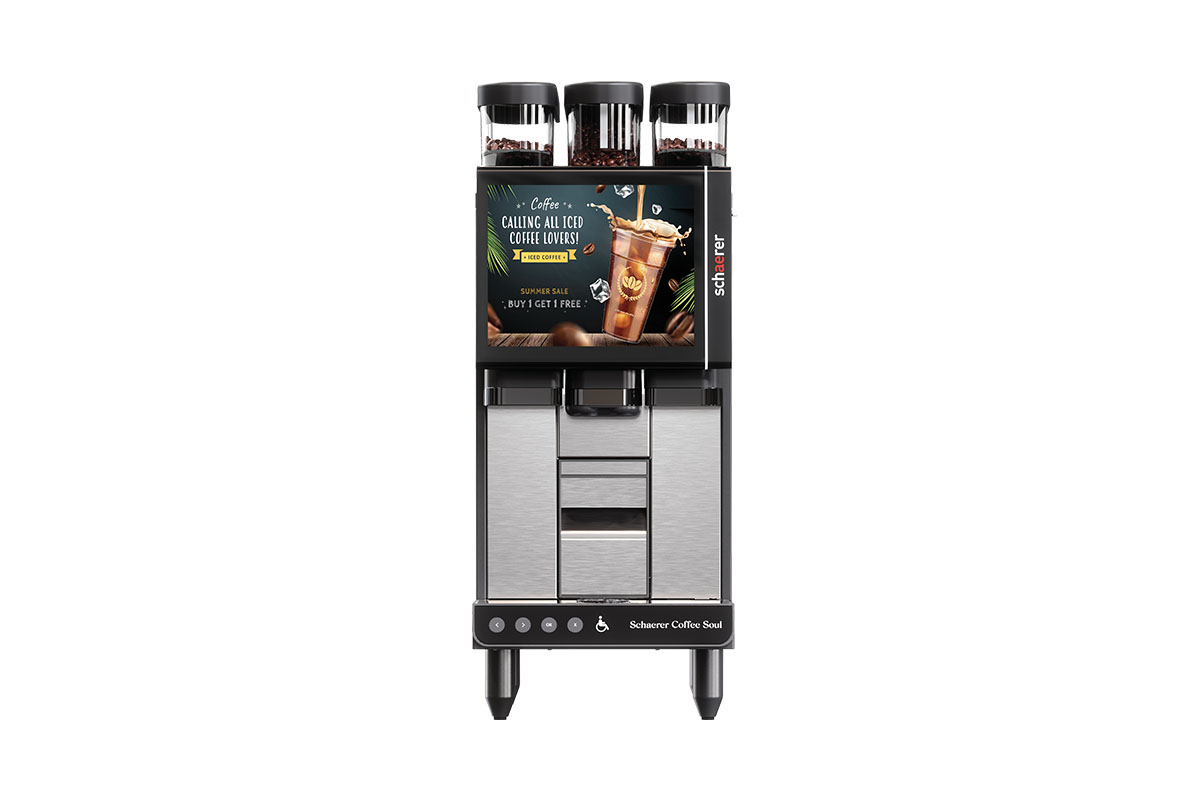
Schaerer
Model: Soul C
Dimensions: 13-in.W x 23-in.D x 32-in.H
Capacity: 150-180 cups a day
Bean hoppers: Three
Website: schaerer.com
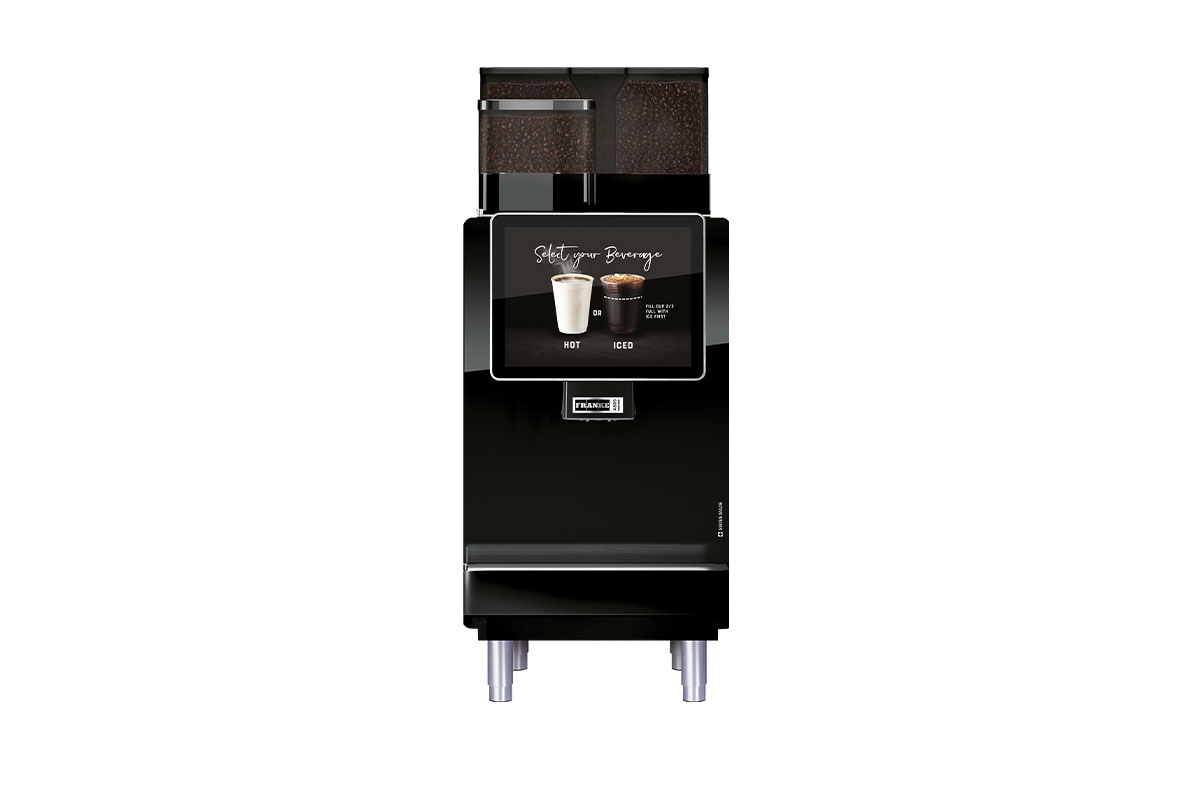
Franke
Model: A800 Fresh Brew
Dimensions: 132/5-in.W x 233/5-in.D x 331/2-in.H
Capacity: Up to 250 cups a day
Bean hoppers: Three
Website: us.coffee.franke.com
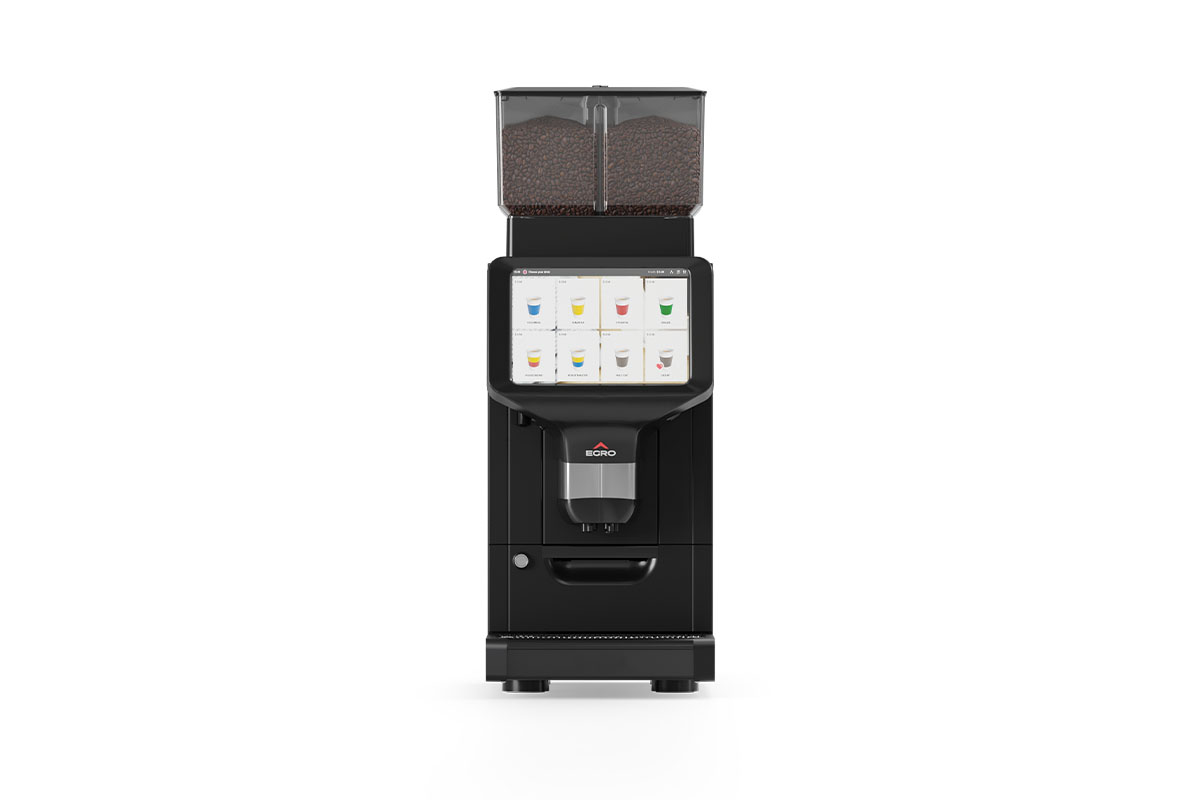
Egro
Model: Touch Coffee
Dimensions: 114/5-in.W x 223/5-in.D x 352/5-in.H
Capacity: 75 cups per hour
Bean hoppers: Four
Website: egrousa.com
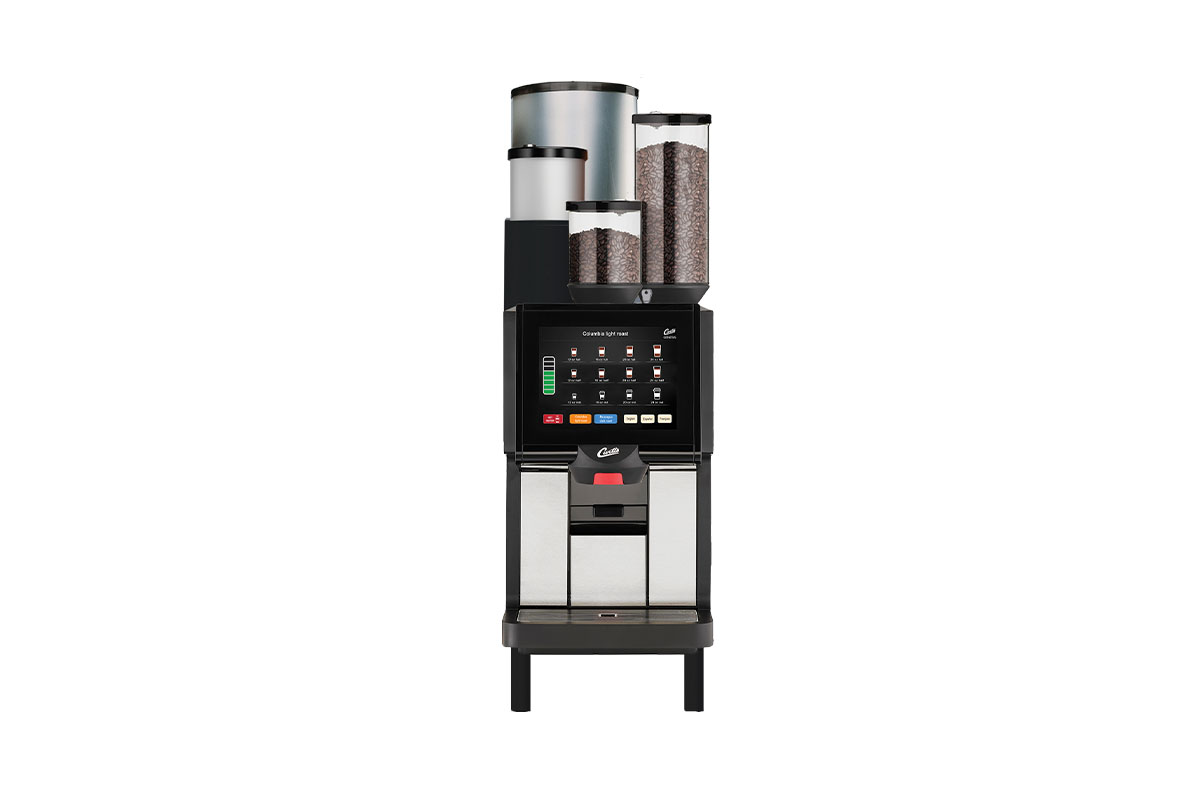
Curtis
Model: Genesis Skyline, with 1 gal. urn
Dimensions: 124/5-in.W x 233/10-in.D x 381/2-in.H
Capacity: 250+ cups a day
Bean hoppers: Two
Website: wilburcurtis.com
RELATED CONTENT
- Advertisement -
- Advertisement -
- Advertisement -
TRENDING NOW
- Advertisement -
- Advertisement -
- Advertisement -

